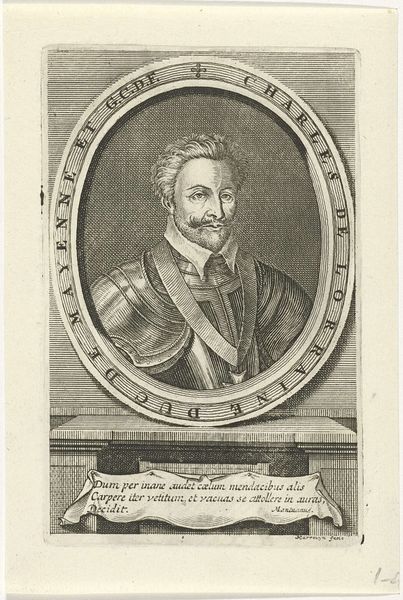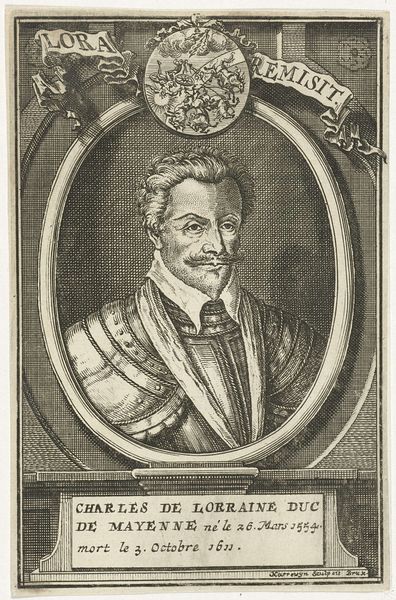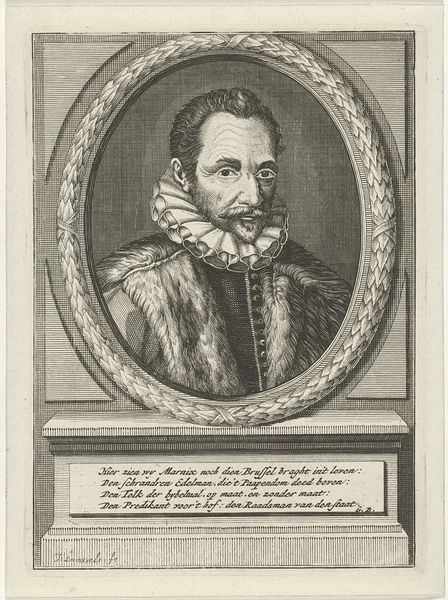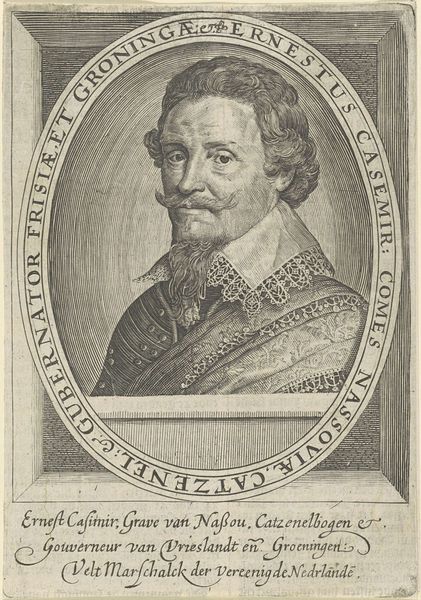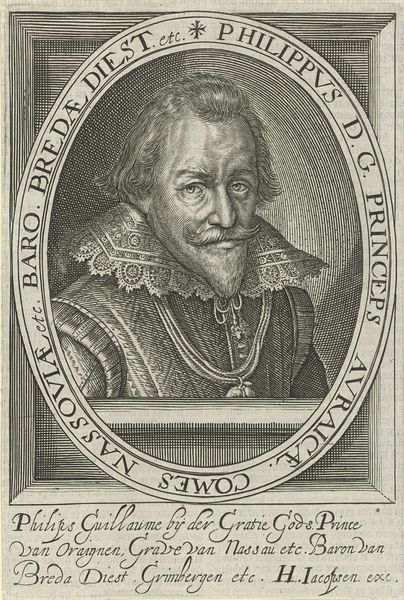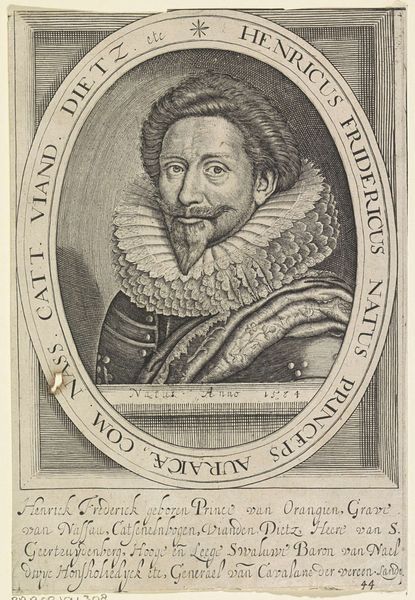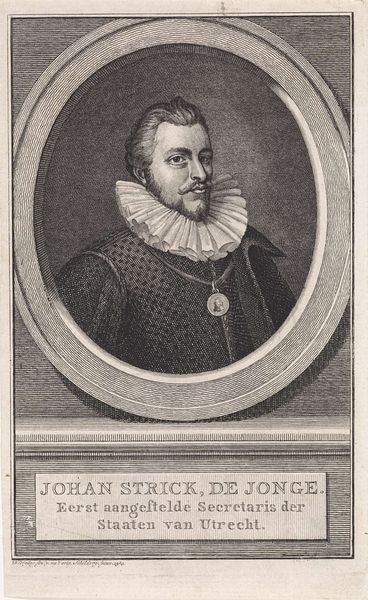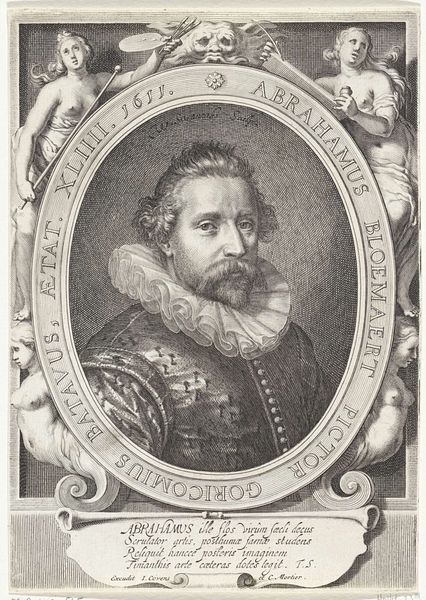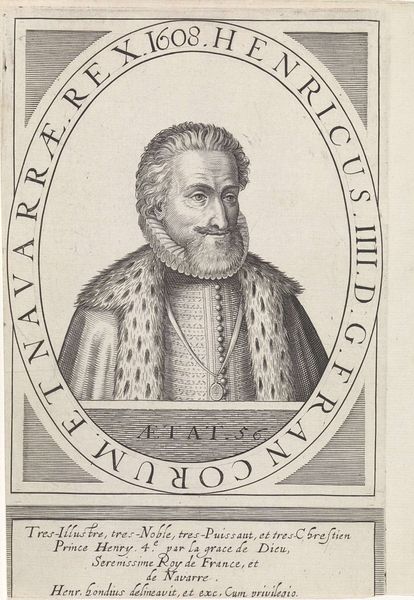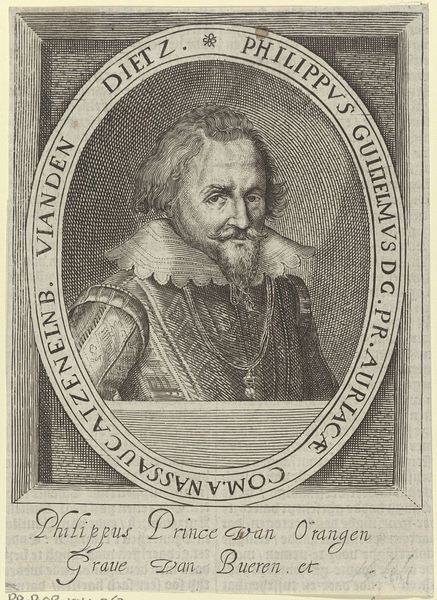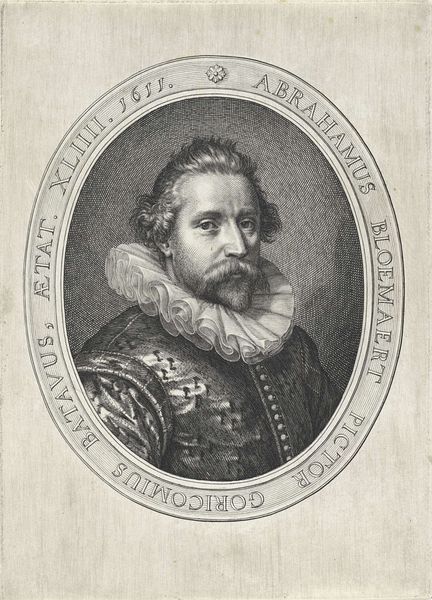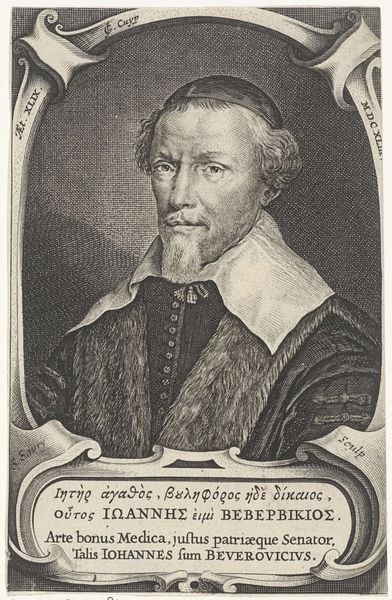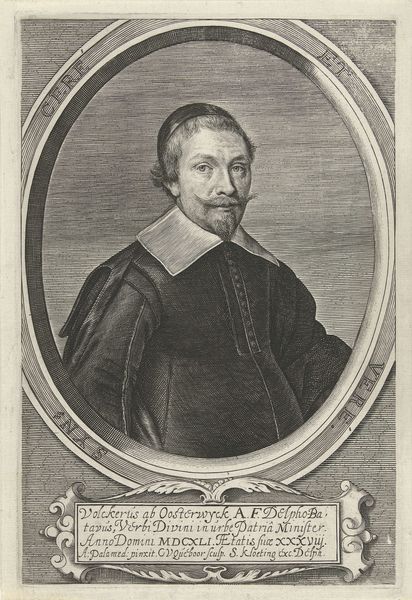
print, paper, engraving
#
portrait
#
baroque
# print
#
paper
#
history-painting
#
engraving
Dimensions: height 147 mm, width 92 mm
Copyright: Rijks Museum: Open Domain
This is Jacobus Harrewijn’s diminutive portrait of Charles de Guise, made using engraving techniques. The process of engraving involves meticulously carving lines into a metal plate, inking the surface, and then using a press to transfer the image onto paper. Look closely, and you can see the intricate network of lines that define the Duke’s features, armor, and the surrounding ornamentation. This wasn't just a technical exercise; it was a deeply social one. Engravings like these played a crucial role in disseminating images and ideas, especially in times before photography. Engraving demanded specialized skills and tools, with workshops often organized around a master craftsman and apprentices. The labor-intensive nature of the process speaks to the value placed on craftsmanship and the importance of skilled labor in the production of images. By understanding the making process, we can appreciate how prints like these were not merely replications, but carefully crafted objects, imbued with social significance.
Comments
No comments
Be the first to comment and join the conversation on the ultimate creative platform.
